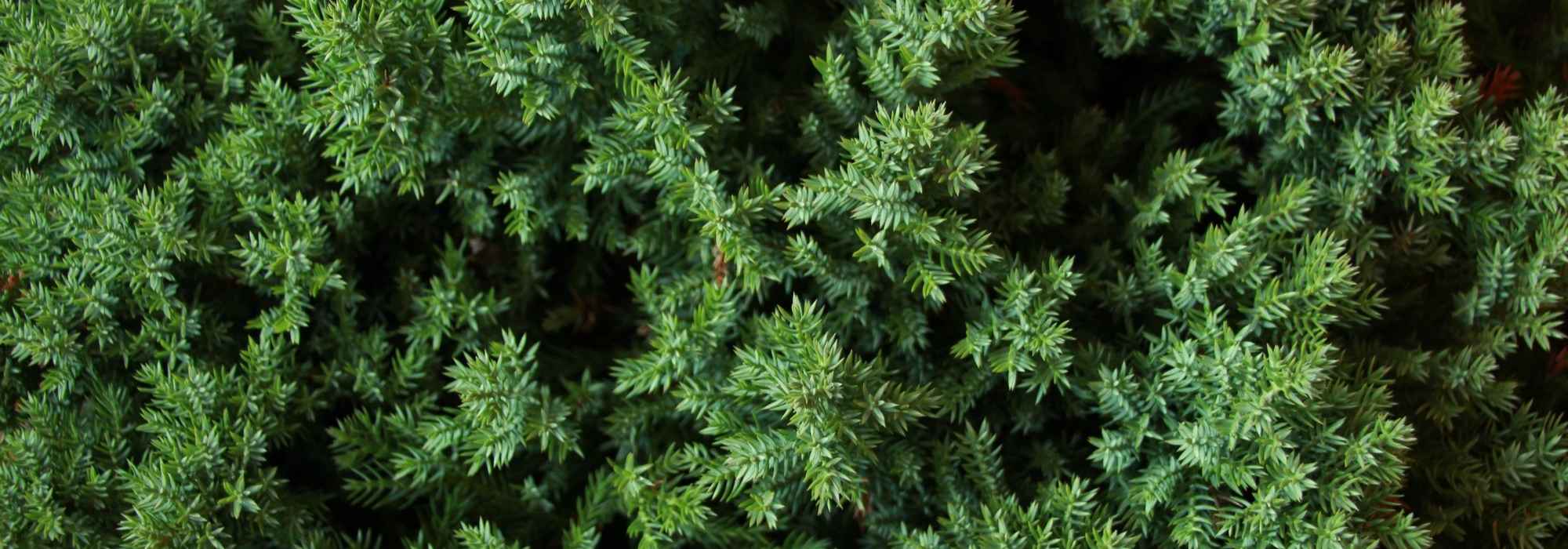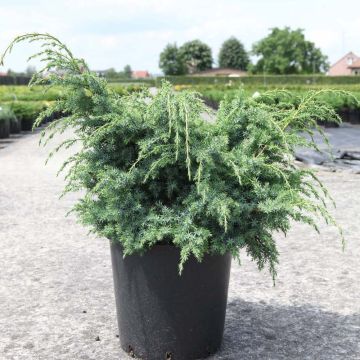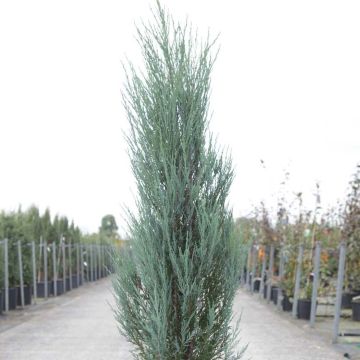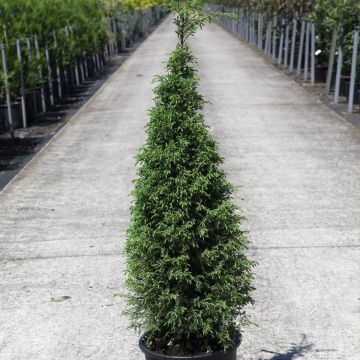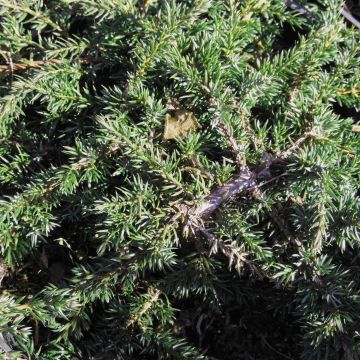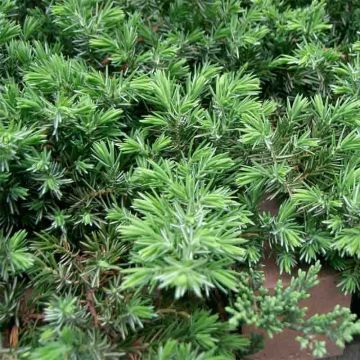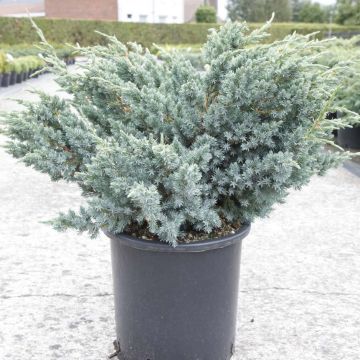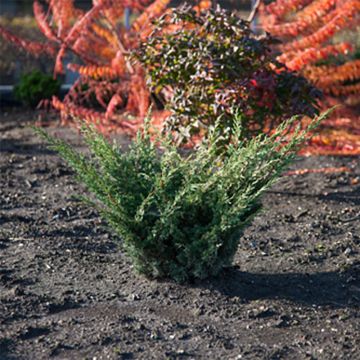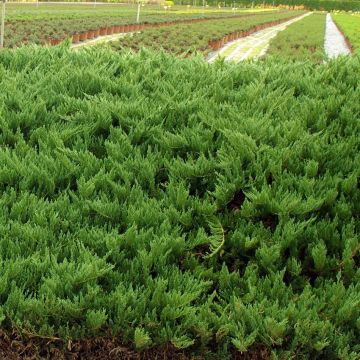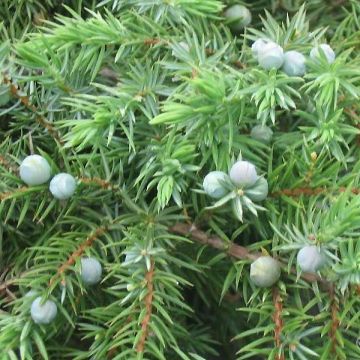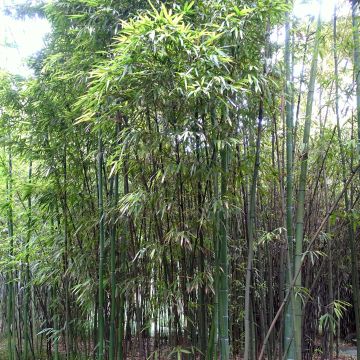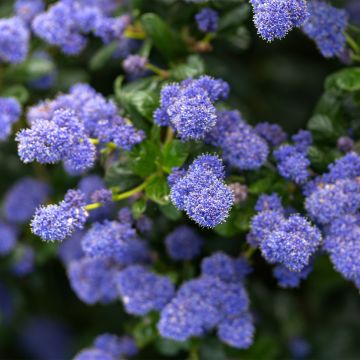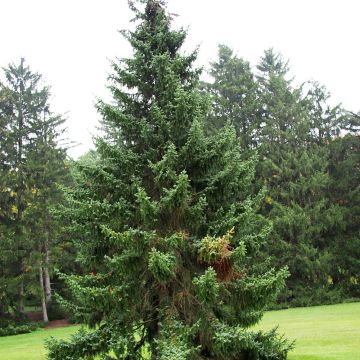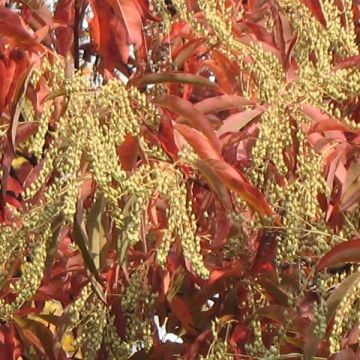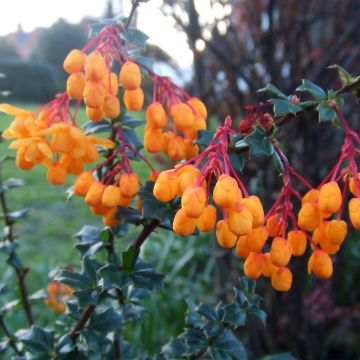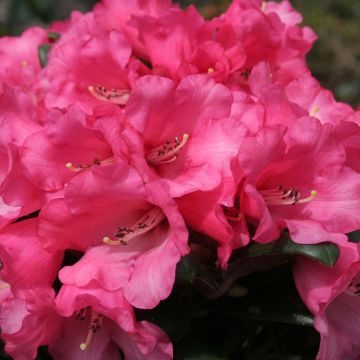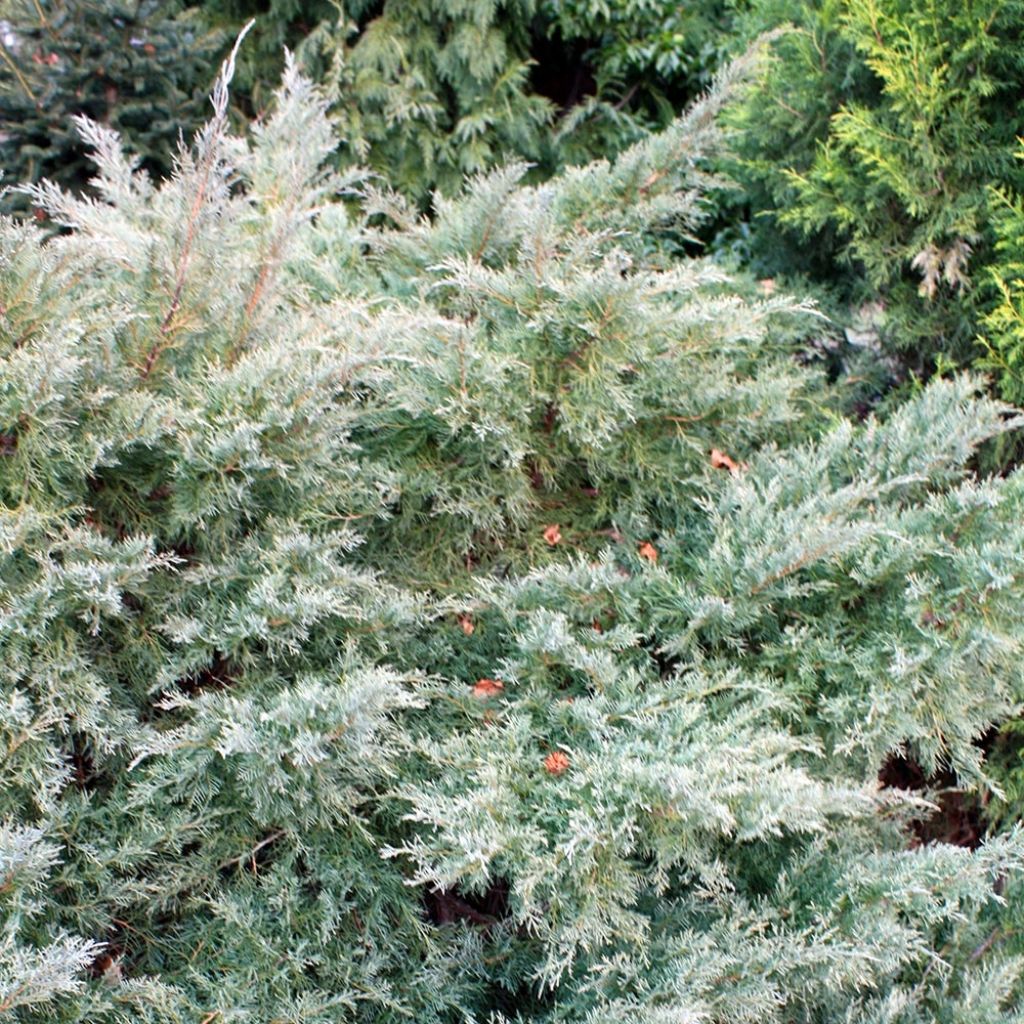

Juniperus Pfitzeriana Glauca
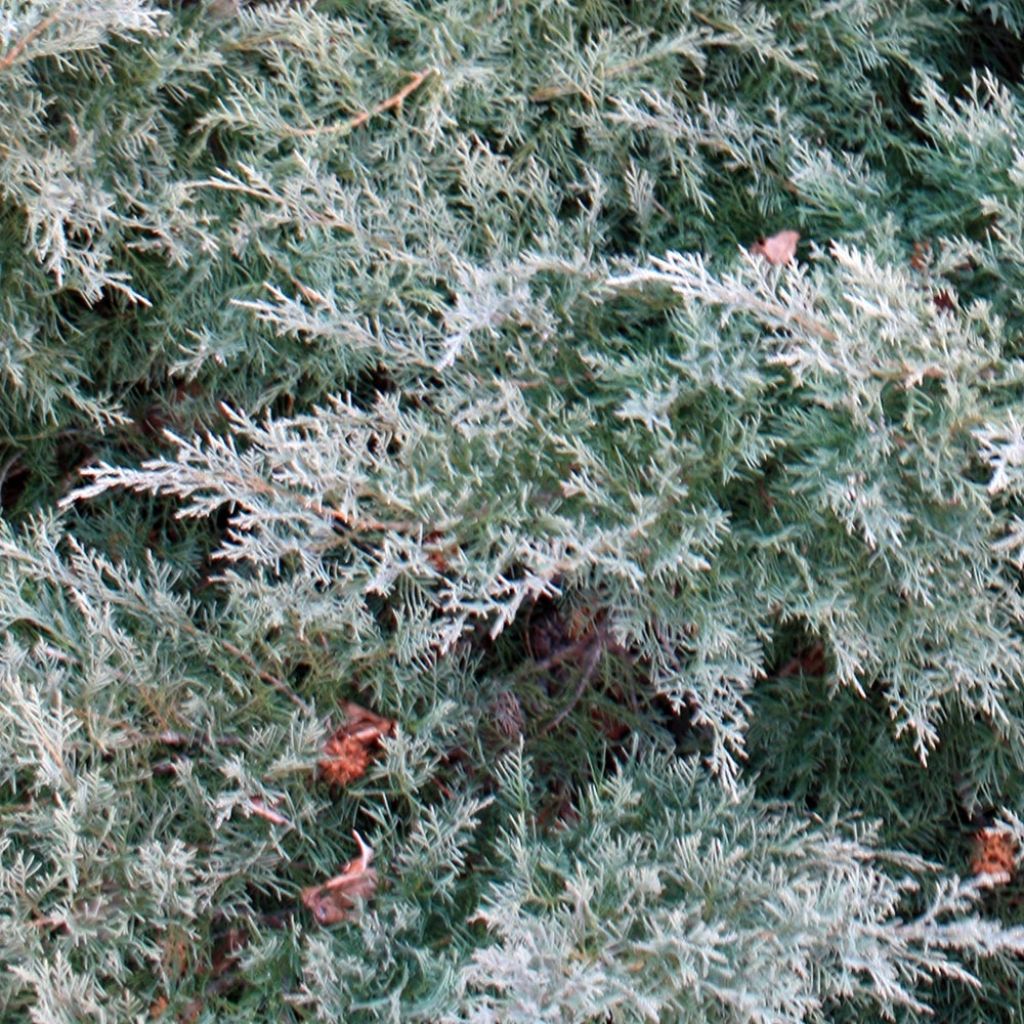

Juniperus Pfitzeriana Glauca
Juniperus Pfitzeriana Glauca
Juniperus pfitzeriana Glauca
Pfitzer Juniper, Chinese juniper
Special offer!
Receive a €20 voucher for any order over €90 (excluding delivery costs, credit notes, and plastic-free options)!
1- Add your favorite plants to your cart.
2- Once you have reached €90, confirm your order (you can even choose the delivery date!).
3- As soon as your order is shipped, you will receive an email containing your voucher code, valid for 3 months (90 days).
Your voucher is unique and can only be used once, for any order with a minimum value of €20, excluding delivery costs.
Can be combined with other current offers, non-divisible and non-refundable.
Home or relay delivery (depending on size and destination)
Schedule delivery date,
and select date in basket
This plant carries a 24 months recovery warranty
More information
We guarantee the quality of our plants for a full growing cycle, and will replace at our expense any plant that fails to recover under normal climatic and planting conditions.
Would this plant suit my garden?
Set up your Plantfit profile →
Description
Juniperus 'Pfitzeriana Glauca' is a very hardy hybrid juniper, forming a medium-sized bush with a spreading habit and upright and arched branches. It has fine and flexible foliage, with a beautiful light blue-grey colour. This conifer is perfect for colonizing a large slope or filling out a border in a small garden. It produces attractive small fruits that start off red-purple and ripen to a blackish-blue colour, which are appreciated by birds. It prefers sunny locations and well-drained soil, even poor soil that is occasionally dry and chalky.
Juniperus x pfitzeriana or Pfitzer juniper is an old hybrid variety that was very popular in the early 20th century. It owes its name to Wilhelm Spitzer, head of cultivation at the Späth nursery in Germany, where this cultivar originated in the 1890s. It is believed to be a cross between J. chinensis, the Chinese juniper, and J. sabina. It is a very hardy and ornamental conifer, belonging to the cypress family like its parents.
The 'Pfitzeriana Glauca' cultivar stands out for its grey-blue foliage. It forms a beautiful bush with a spreading habit and branches that tend to be upright and arched. It reaches a height of about 1.50m (4ft 11in) and a spread of 3m (9ft 10in) at maturity. It grows slowly when young, but its growth accelerates slightly as it ages. Its thin and flexible branches, with a feathery appearance, are covered with tightly packed small leaves that release a pungent odour when rubbed, which can be perceived as unpleasant. The fruits that form on the female plants are berries called galbuli; they are blackish-blue when ripe and rich in therapeutic properties. Junipers have a shallow root system, which makes them vulnerable to strong winds and difficult to combine with perennials.
The 'Pfitzeriana Glauca' juniper is a hardy conifer that has proven its vigour and robustness on slopes and in large rock gardens, among rocks. With its moderate growth and its grey-blue mantle and foliage all year round, it will work wonders as a standalone plant or in borders, planted alongside conifers with an upright or bushy habit. The true graphic qualities of conifers naturally stand out in the design of a contemporary garden, which favours the aesthetics of shapes, silhouettes, and textures over the dance of flowers. These plants, with their reassuring permanence, provide lasting structure to a border, mark pathways, border terraces, easily replacing the strong presence of trimmed boxwood or holly. They also pair well with wild-looking grasses with a very complementary temperament. They can also be combined with heathers (Erica x darleyensis), lavender, rosemary, or even frugal roses (Rosa chinensis 'Mutabilis'). The key is to play with volumes and colours.
Juniperus Pfitzeriana Glauca in pictures
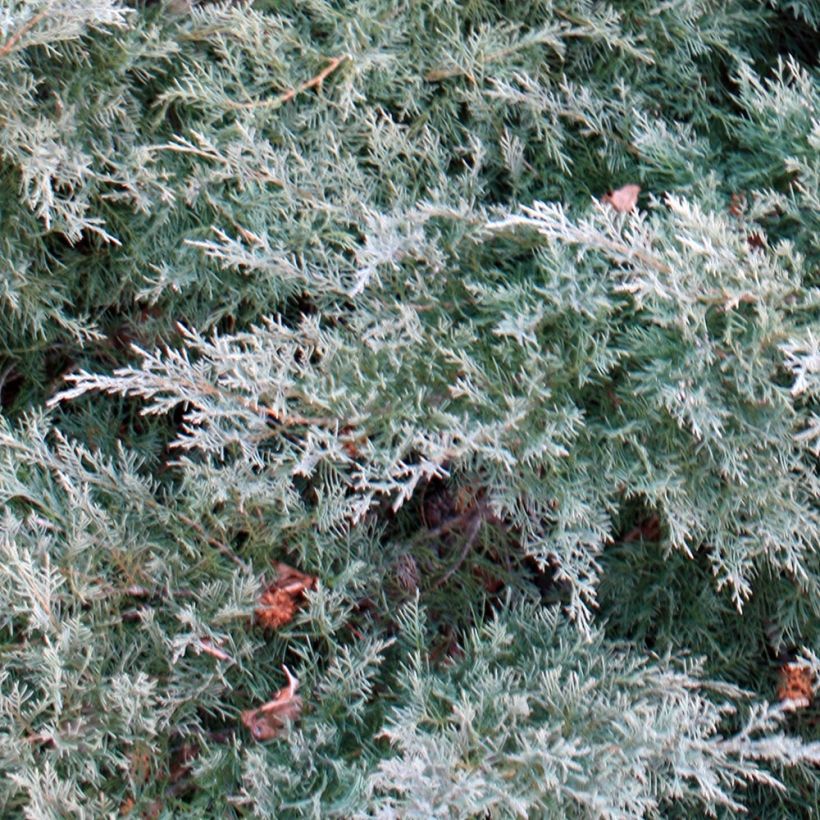



Plant habit
Flowering
Foliage
Safety measures
Botanical data
Juniperus
pfitzeriana
Glauca
Cupressaceae
Pfitzer Juniper, Chinese juniper
Cultivar or hybrid
atteinterespiratoire
Cette plante peut entraîner des symptômes allergiques.
Evitez de la planter si vous ou vos proches souffrez de rhinite saisonnière ("rhume des foins").
Davantage d'informations sur https://plantes-risque.info
Other Juniperus - Juniper
View all →Planting and care
Juniperus 'Pfitzeriana 'Glauca' is planted from September to November and from February to June in well-drained, light, even limestone and poor soil. A rocky or sandy soil that is occasionally dry does not bother it. Choose a very sunny or semi-shaded location sheltered from prevailing winds. Soak the root balls well before planting. Add organic amendment at planting and water generously in the first years. Every year, in April, apply a special conifer fertilizer and cultivate the soil in summer. This very hardy conifer fears heavy, waterlogged soils in winter. Pruning is not obligatory, but this conifer can be pruned to maintain a beautiful habit, form a hedge or a bonsai. The old wood, devoid of needles, rarely regrows. This should be done from June to September.
Planting period
Intended location
Care
Planting & care advice
This item has not been reviewed yet - be the first to leave a review about it.
Similar products
Haven't found what you were looking for?
Hardiness is the lowest winter temperature a plant can endure without suffering serious damage or even dying. However, hardiness is affected by location (a sheltered area, such as a patio), protection (winter cover) and soil type (hardiness is improved by well-drained soil).

Photo Sharing Terms & Conditions
In order to encourage gardeners to interact and share their experiences, Promesse de fleurs offers various media enabling content to be uploaded onto its Site - in particular via the ‘Photo sharing’ module.
The User agrees to refrain from:
- Posting any content that is illegal, prejudicial, insulting, racist, inciteful to hatred, revisionist, contrary to public decency, that infringes on privacy or on the privacy rights of third parties, in particular the publicity rights of persons and goods, intellectual property rights, or the right to privacy.
- Submitting content on behalf of a third party;
- Impersonate the identity of a third party and/or publish any personal information about a third party;
In general, the User undertakes to refrain from any unethical behaviour.
All Content (in particular text, comments, files, images, photos, videos, creative works, etc.), which may be subject to property or intellectual property rights, image or other private rights, shall remain the property of the User, subject to the limited rights granted by the terms of the licence granted by Promesse de fleurs as stated below. Users are at liberty to publish or not to publish such Content on the Site, notably via the ‘Photo Sharing’ facility, and accept that this Content shall be made public and freely accessible, notably on the Internet.
Users further acknowledge, undertake to have ,and guarantee that they hold all necessary rights and permissions to publish such material on the Site, in particular with regard to the legislation in force pertaining to any privacy, property, intellectual property, image, or contractual rights, or rights of any other nature. By publishing such Content on the Site, Users acknowledge accepting full liability as publishers of the Content within the meaning of the law, and grant Promesse de fleurs, free of charge, an inclusive, worldwide licence for the said Content for the entire duration of its publication, including all reproduction, representation, up/downloading, displaying, performing, transmission, and storage rights.
Users also grant permission for their name to be linked to the Content and accept that this link may not always be made available.
By engaging in posting material, Users consent to their Content becoming automatically accessible on the Internet, in particular on other sites and/or blogs and/or web pages of the Promesse de fleurs site, including in particular social pages and the Promesse de fleurs catalogue.
Users may secure the removal of entrusted content free of charge by issuing a simple request via our contact form.
The flowering period indicated on our website applies to countries and regions located in USDA zone 8 (France, the United Kingdom, Ireland, the Netherlands, etc.)
It will vary according to where you live:
- In zones 9 to 10 (Italy, Spain, Greece, etc.), flowering will occur about 2 to 4 weeks earlier.
- In zones 6 to 7 (Germany, Poland, Slovenia, and lower mountainous regions), flowering will be delayed by 2 to 3 weeks.
- In zone 5 (Central Europe, Scandinavia), blooming will be delayed by 3 to 5 weeks.
In temperate climates, pruning of spring-flowering shrubs (forsythia, spireas, etc.) should be done just after flowering.
Pruning of summer-flowering shrubs (Indian Lilac, Perovskia, etc.) can be done in winter or spring.
In cold regions as well as with frost-sensitive plants, avoid pruning too early when severe frosts may still occur.
The planting period indicated on our website applies to countries and regions located in USDA zone 8 (France, United Kingdom, Ireland, Netherlands).
It will vary according to where you live:
- In Mediterranean zones (Marseille, Madrid, Milan, etc.), autumn and winter are the best planting periods.
- In continental zones (Strasbourg, Munich, Vienna, etc.), delay planting by 2 to 3 weeks in spring and bring it forward by 2 to 4 weeks in autumn.
- In mountainous regions (the Alps, Pyrenees, Carpathians, etc.), it is best to plant in late spring (May-June) or late summer (August-September).
The harvesting period indicated on our website applies to countries and regions in USDA zone 8 (France, England, Ireland, the Netherlands).
In colder areas (Scandinavia, Poland, Austria...) fruit and vegetable harvests are likely to be delayed by 3-4 weeks.
In warmer areas (Italy, Spain, Greece, etc.), harvesting will probably take place earlier, depending on weather conditions.
The sowing periods indicated on our website apply to countries and regions within USDA Zone 8 (France, UK, Ireland, Netherlands).
In colder areas (Scandinavia, Poland, Austria...), delay any outdoor sowing by 3-4 weeks, or sow under glass.
In warmer climes (Italy, Spain, Greece, etc.), bring outdoor sowing forward by a few weeks.






























